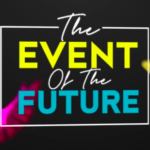But I feel like I am starting to see a new information landscape emerge, one that is animated by the streams of data, opinions, and observations that fly second-by-second across our laptop and phone screens, but also anchored by traditional news sources with rock-solid reputations for accuracy and trustworthiness.
For example, when a freakish hailstorm hit Brooklyn, where I live, a few weeks ago, I jumped on TweetDeck and entered the hashtag #brooklyn as soon as ice began pelting the window. There were lots of incredulous reports, and plenty of bon mots (My favorite: “Tom Hanks must be filming You’ve Got Hail!”). But for a more comprehensive look at the storm, I turned to the New York Times, which posted a story on its “CityRoom” blog later that night. Newspapers and news websites may be slower to broadcast news, but I know from my days reporting breaking news, that no matter how urgent the story, getting the facts right trumps being first. I might have been able to piece together a picture of the storm together myself, but I was glad someone was already working on it.
And the information available to me didn’t stop there, of course. YouTube offers dozens of views of the storm, including this one from the New York Daily News. (It’s pretty amazing.) And The National Oceanic and Atmospheric Administration website reported that hailstones measured 3/4 of an inch in Brooklyn Heights, but that Hoboken had it even worse. By looking at all of those sources, I was able to learn about the storm with much more precision, and with far richer layers of detail than I could have by consulting any one of them alone.
I’m far from the first to marvel at the range and sheer volume of information now available to us. (The phrase “drinking from a fire hose” now seems insufficient and almost quaint.) But it seems like so many conversations about media these days are about how one medium is going to replace another. And I think if you look at the big picture, the case can be made that they support rather than supplant one another.



